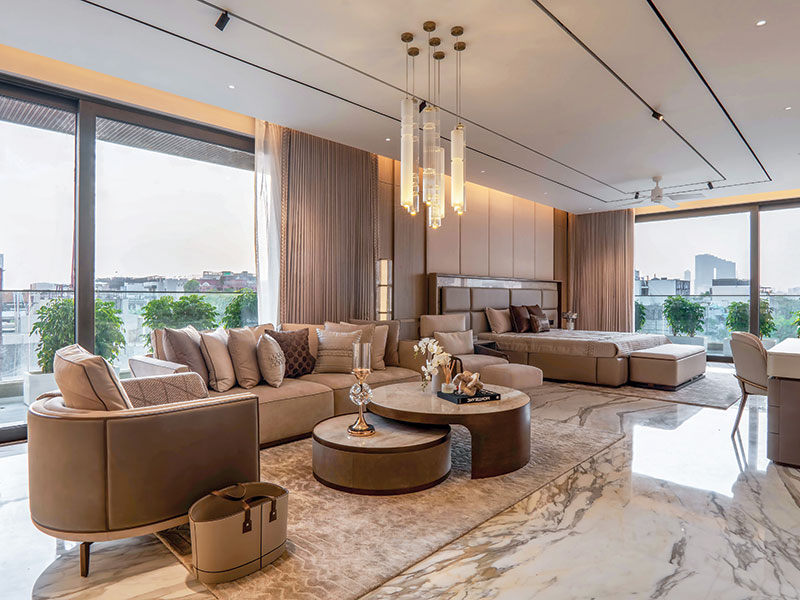Ar. Tripat Girdhar, The Design Studio

The grain storehouse of Ramasseum, built-in adobe in 1300 BC, still exists in Egypt, and the Great Wall of China has rammed earth sections dating back over 2000 years. Ancient towns and massive buildings created in various styles of mud construction can still be seen in Iran, India, Nepal, and Yemen.
Mud is one of the most abundant and resourceful raw materials for constructing buildings; its emergence and development over centuries – from ancient archaeological sites to contemporary dwellings in the 21st century - has led to the creation of numerous construction techniques. It is completely environmentally friendly since it is not manufactured or transmitted in any way.
At The Design Studio, we work on boosting mud’s resistance and processing speed to make it a more modern and competitive material.
Ar. Tripat Girdhar, The Design Studio
Though the earth has been mostly ignored since the emergence of its close cousin ‘concrete’ in the 1950s, but its sustainability and aesthetic qualities continue to attract modern architects and environmentalists. As this sustainable material gains traction, industrial sectors dedicated to earthen construction are forming. Many people believe that earth architecture is exclusively used for dwellings in poor rural areas, yet there are instances of earth architecture in airport terminals, ministries, institutions, libraries, and industries. A wall composed of raw dirt is warm in the winter and cool in the summer – acting as a natural air conditioner. After the building is disassembled, the earth returns to the soil and can be recycled again and again.
Architecture necessitates the use of a variety of materials and techniques; however, the majority of these construction methods need a lot of energy. Mud construction uses less energy and is particularly effective in a variety of climates. At The Design Studio, we also use energy harvesting buildings to create a sustainable way of living. Energy harvesting is considered one of the most important catalysts in wealth generation, economic growth, and social development in any country.

Solar Energy is a plentiful, reliable, and renewable energy source which contributes in reducing a country’s carbon emissions. Commercial buildings like offices and other business organizations depend on electricity for most of their energy consumption needs and its consumption is pretty high. Installing solar panels and roof-top solar power systems are good alternatives to save energy use, especially in commercial buildings.
uPVC is another material used in our designs; it is low-maintenance but efficient, and comes in a range of shapes, sizes, and colors to complement any modern architecture and can be installed in any type of structure, including villas, flats, workplaces, and hotels.
















